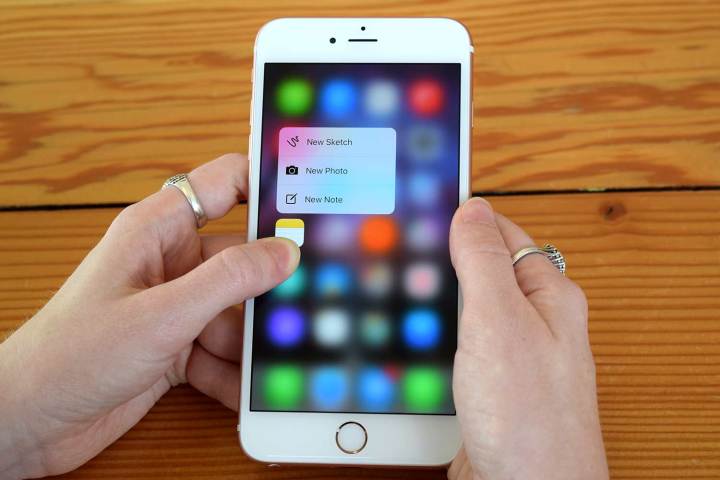
ClearForce works similar to 3D Touch (known as Force Touch on the Apple Watch, at first) on the iPhone, it can sense different levels of pressure when touching the screen, and the phone can be programmed to react in different ways depending on the degree of force. Synaptics claims ClearForce will offer different interfaces for speed scrolling, zoom, gaming, and text or photo editing. The technology works with a finger or stylus, making it suitable for use on both smartphones and tablets.
On the iPhone, 3D Touch is used primarily as a pseudo right-click, letting the user open contextual menus and more control on mobile games. We suspect it’ll be used in a similar way on Android, though Google may need to approve the technology. Art is another area where ClearForce could provide deeper functionality, where varying pressure may affect the thickness of a drawn line. Apple demonstrated something like this with the Apple Pencil on the iPad Pro.
Huawei’s pressure sensitive system on the Mate S was little more than a gimmick when we tried it out recently, but the company has calling for developers and even fans to submit ideas on how to use the tech in other ways, proving it intends to exploit the system further. Whether it’s Synaptics behind Huawei’s screen tech isn’t known.
Synaptics says it’s working with various manufacturers to bring ClearForce-enabled smartphones to the market by early 2016. They didn’t provide any names, but the technology crosses paths with Qualcomm’s Snapdragon 820 launch, meaning we could see a few premium phones with both technologies inside.
Editors' Recommendations
- iOS 18 could make my iPhone look like Android, and I hate it
- I used an app to create 3D models with my iPhone, and it’s shockingly great
- New 3D smartphone technology could change photography, experts say
- iPhone 13 Pro Max vs. Samsung Galaxy Z Fold 3
- Samsung Galaxy Z Flip 3 vs. iPhone 12 Pro Max


